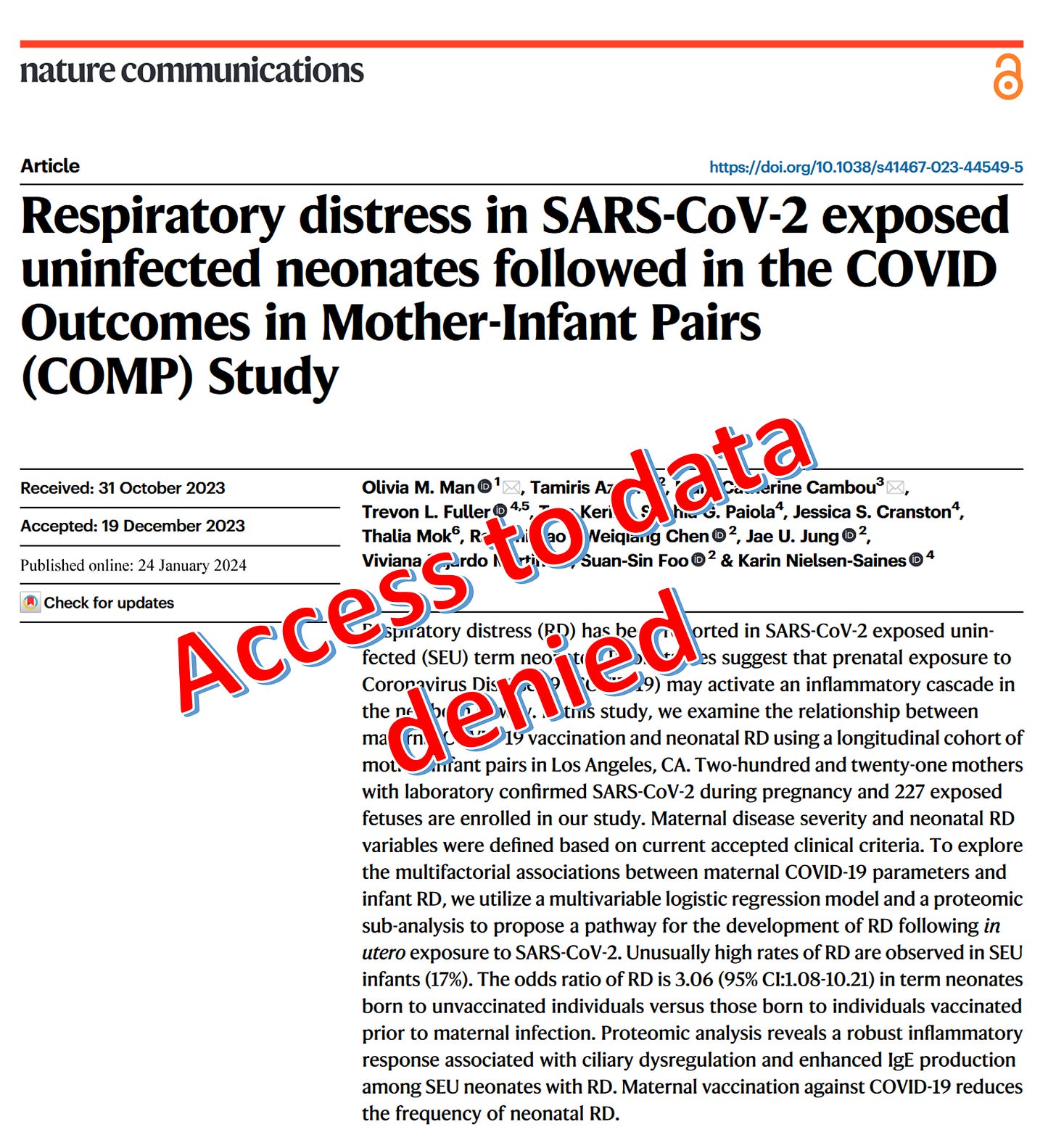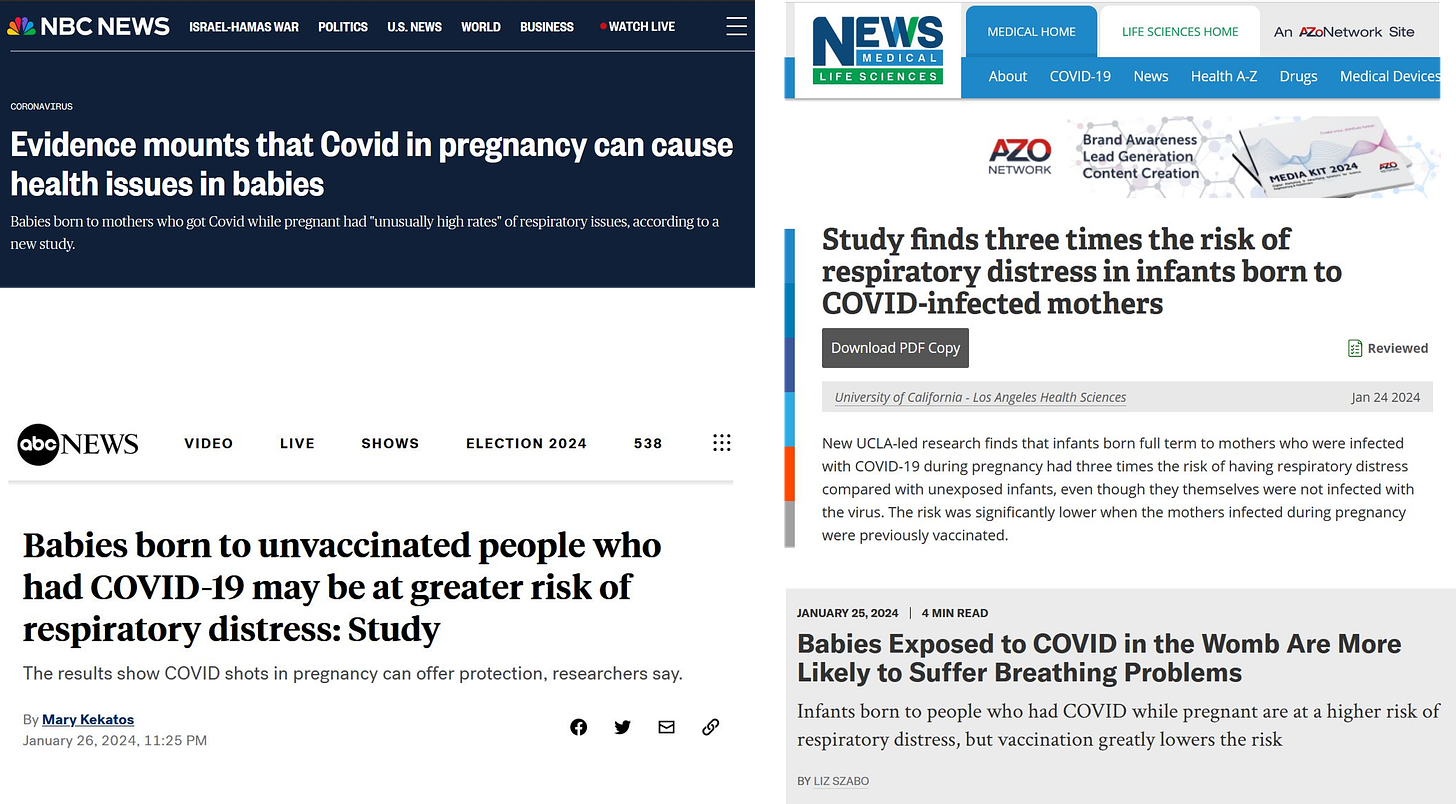This article is co-authored by Mr Law, Health and Technology
ANOTHER week, another paper published in a top journal pushing either the notion that covid is especially dangerous for pregnant women and their babies or that vaccinated pregnant women have all-round better outcomes.
This paper published in Nature on January 24 makes both claims: babies born to mothers exposed to covid during pregnancy are at greater risk of respiratory distress (RD) than those unexposed, but that covid vaccination during pregnancy reduces the risk of RD in the babies.

Inevitably, the mainstream media gave great prominence to the study, often exaggerating its conclusions.:

And of course there was the inevitable triumphant tweet from an academic who has been prominent in promoting previously flawed studies to try to convince pregnant women to get the covid vaccine:

But numerous researchers raised concerns about the paper, including the following questions that they feel should have been answered:
- Why is there no information about mothers vaccinated before pregnancy?
- How many mothers were vaxxed after infection?
- How many babies received one or more jabs at birth (a common thing in the US now; in California some babies have had as many as three jabs before going home)?
- How many babies had RD from birth versus had RD develop 6-24 hrs after birth?
- How many mothers were given steroids in the 7 days prior to birth?
- What was the average antenatal stay prior to birth (in the US this is often much longer, increasing the risk of nosocomial [acquired in hospital] infection)?
- Why are there so few ‘normal’ births, and does comparison between 227 and 7 mean the study suffers from the bias of small sample size? (A convenience sample?)
- How many mothers were intubated and therefore included via surrogate consent?
- What accommodations were made for the fact that premature infants, less than 37 weeks, and especially premature, less than 34 weeks, will naturally/commonly show signs of RD irrespective of covid? There seems to be no identification of or correction for this normal observation.
- What was the premature rate between vaxxed and unvaxxed?
- Why was the key descriptor for severe illness so ridiculously normal? A pregnant woman delivering will often have O2 sats in the low 90s, 94 is par for the course. Why was this boundary condition selected as a singular definer for ‘severe covid’? Was this to artificially inflate severe covid numbers?
We have been arguing that papers such as this, which do not make the (suitably anonymised) data publicly available for independent analysis, should not be accepted for publication. In this case the paper has the following ‘Data Availability’ statement:
‘The data that support the findings of this study are available under restricted access due to the sensitivity of information and patient confidentiality. The raw data are protected and not available due to data privacy laws. Access to processed de-identified data may be available upon reasonable request to the corresponding authors.’
We made a ‘reasonable request’ to the lead author for access to the de-identified data but, despite a follow-up, have not even received an acknowledgement.
This article appeared in Where are the Numbers? on February 4, 2024, and is republished by kind permission.
If you appreciated this article, perhaps you might consider making a donation to The Conservative Woman. Unlike most other websites, we receive no independent funding. Our editors are unpaid and work entirely voluntarily as do the majority of our contributors but there are inevitable costs associated with running a website. We depend on our readers to help us, either with regular or one-off payments. You can donate here. Thank you.
If you have not already signed up to a daily email alert of new articles please do so. It is here and free! Thank you.
